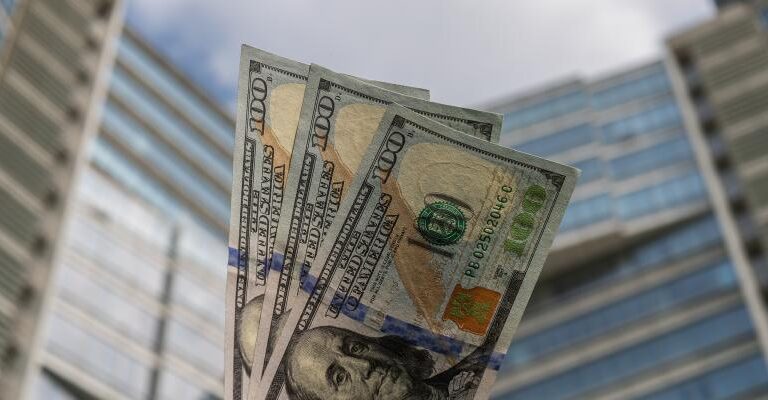Buyers hoping to capitalize on distress may only have a small window of time to strike as long-term prospects for troubled assets begins to brighten.
Beth Mattson-Teig
Investors hoping to cash in on a COVID-19 pricing discounts may see opportunities slip away as emergency-use approval of the first vaccine against in the virus was granted to Pfizer and with availability expected to grow as other firms gain approvals in the coming weeks and months.
The coming widespread distribution of vaccines could very well prove to be the long-awaited light at the end of the tunnel for some struggling assets. Many buyers in the market have been hoping to negotiate at least some COVID-19 discount on pricing, even a slight five percent to 10 percent discount based on weaker rent growth. “I think there could still be some deals made in that range, but the combination of the vaccine outlook combined with more and more active liquidity in debt markets are going to make it more difficult to find those opportunities in the near term,” says David Bitner, head of Americas Capital Markets Research at Cushman & Wakefield.
It has become more of a seller-favored market on the heels of recent vaccine news. There is a significant scenario where the world could change very dramatically for the better in the near term. Some sellers are choosing to hold and see what happens in 2021. Even if an owner has an upcoming maturity, many have confidence that they will be able to refinance, potentially at a lower cost than they have on in place date, notes Bitner. “So, it is tough to motivate someone to take a haircut if they don’t have to,” he says.
In addition to vaccine news, the potential for Congress to pass a new COVID-19 rescue package is creating some additional optimism, although such legislation still seems far from certain. “These positives are likely boosting pricing, but there are negative expectations as well,” says Andrew Rybczynski, a managing consultant at CoStar Group. For example, retail is battling long-term pressures from e-commerce that the pandemic only exacerbated. Weakness in the retail property sector is likely to persist, and pricing will reflect that, he says. There also are uncertainties ahead related to the longer-term impact of remote working on demand for office space, as well as how long it will take employment to recover. “Arguably, the window of opportunity is still opening, rather than closing,” he says
Looking back at the last recession, the peak year for distressed transaction was in 2011—three years after the technical definition of recessions hit hardest, notes Rybczynski. The Oxford Economics base case forecast, which CoStar uses, does not call for real GDP to recover to its previous peak until the end of 2021. “Distress sales can take a while to hit the market, and the CoStar Risk Analytics team expects the next two years to match or exceed the volume of distressed transactions in the Great Recession, depending on the forecast model used,” he says.
Taking stock of valuations
Even with the possibility of a vaccine ahead, investors and lenders are still facing a tough job of figuring out where property values are at now compared to pre-pandemic levels. Generally, there is an expectation of value adjustments, but the amount of those adjustments can vary significantly across property types and geographic markets. Compounding that challenge is that sales data remains thing. Although transaction volume has picked up, third quarter sales were still down 54 percent year-over-year, according to CoStar.
CoStar’s Commercial Repeat Sales Index indicates that pricing recently hit a new peak in October. The value-weighted U.S. Composite Index, which reflects larger asset sales common in core markets improved 5.2 percent year-over-year. However, gains in the overall index is masking weakness in some property types. Office and retail value-weighted price indices experienced year-over-year losses of 5.2 percent and 3.2 percent in the third quarter compared to year-over-year gains of 7.3 percent in both industrial and multifamily.
CoStar is forecasting value losses across property types, with industrial forecasted for the mildest losses and office the sharpest. “It’s important to recall that retail pricing has been weakening for a couple years now, which helps explain why the forecasted reversals are not as sharp for that sector, despite ample headwinds, says Rybczynski.
Another benchmark for current property values is the CMBS market. According to a new report from DBRS Morningstar, an analysis of 284 CMBS loans that were sent to special servicing since March have seen appraised values drop by an average of 24.0 percent compared to origination values. The bright spot is that 24 percent could very well mark the bottom of the market given the pending rollout of the coronavirus vaccine, at least in percentage terms, notes Steve Jellinek, vice president and head of CMBS research at DBRS Morningstar. “In terms of the severity of the dollar amount affected, it will probably be higher as more loans transfer and are reappraised or forbearance periods wear off and they get additional forbearance or some other exit strategy, such as liquidation,” he says.
That 24 percent decline in values is heavily skewed towards distressed retail malls and lodging assets. However, it does provide a data point for industry participants that are trying to gauge how values have reset on certain assets, says Jellinek. Another major indicator to watch going forward is the outlook for growth in cash. DBRS Morningstar is forecasting that net cash flow growth for regional malls and lodging properties will remain below pre-pandemic levels at least through 2021, and potentially as far out as 2024.
No one-size fits all answer
Much of the distress that has emerged to date has been concentrated in hotels and retail. Property values have been holding up better in industrial, multifamily, self-storage and office, although investors are more cautious when it comes to underwriting rent growth. Some pockets of the market have seen a return of cap rate compression due to low financing rates and a shortage of for-sale inventory as investors began moving off the sidelines. “We really haven’t witnessed any change since the notification of this promising vaccine,” says Dean Sigmon, an executive vice president at Transwestern specializing in multifamily investment sales in the Washington, D.C., and Baltimore markets. “We have seen cap rate compression in some submarkets even during the pandemic,” he adds.
Multifamily investors began returning to the market in June with huge pent-up demand to place capital. The bigger problem has been a lack of inventory with owners who were hesitant to put assets on the market for sale. For example, Transwestern recently represented the sellers of two value-add apartment properties in the D.C. metro that combined sold for nearly $100 million in separate transactions. Neither of the apartment assets sold were negatively impacted by the pandemic and both sales priced at cap rates around 5 percent. “There is just not enough supply to meet demand,” adds Sigmon.
Looking ahead to the first half of 2021, there is likely to be continued negative effects from the coronavirus as it will take time for states to roll-out the vaccine to the public. “I think the second half of 2021 is when you are going to have significant diminished uncertainty, and that’s going to really help narrow the buyer-seller gap,” says Bitner. “That is going to be the spark that lights all of the dry tinder on all of the capital that is out there.” That will complicate any significant pricing adjustments because there is just too much money willing to jump on even a slight discount to pre-COVID-19 pricing, he adds.






